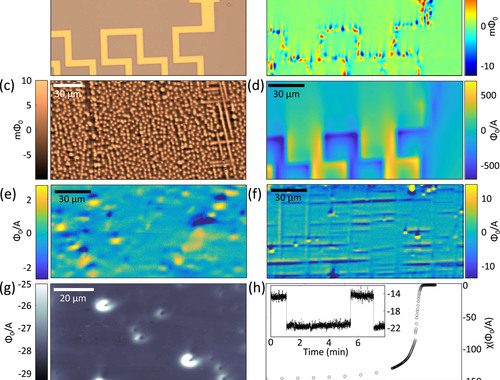
Scanning SQUID microscopy in a cryogenfree cooler
Authors: Yishai Shperber , Naor Vardi, Eylon Persky, Shai Wissberg, Martin E. Huber and Beena Kalisky
Rev. Sci. Instrum. 90, 053702 (2019)
Abstract: Scanning superconducting quantum interference device (SQUID) microscopy is a powerful tool for investigating electronic states at surfaces and interfaces by mapping their magnetic signal. SQUID operation requires cryogenic temperatures, which are typically achieved by immersing the cryostat in liquid helium. Making a transition to cryogen free systems is desirable, but has been challenging, as electric noise and vibrations are increased in such systems. We report on the successful operation of a scanning SQUID microscope in a modified Montana Instruments cryogen-free cooler with a base temperature of 4.3 K. We demonstrate scanning SQUID measurements with flux noise performance comparable to a wet system and correlate the sensor-sample vibrations to the cryocooler operation frequencies. In addition, we demonstrate successful operation in a variety of SQUID operation modes, including mapping static magnetic fields, measurement of local susceptibility, and spatial mapping of current flow distribution.
